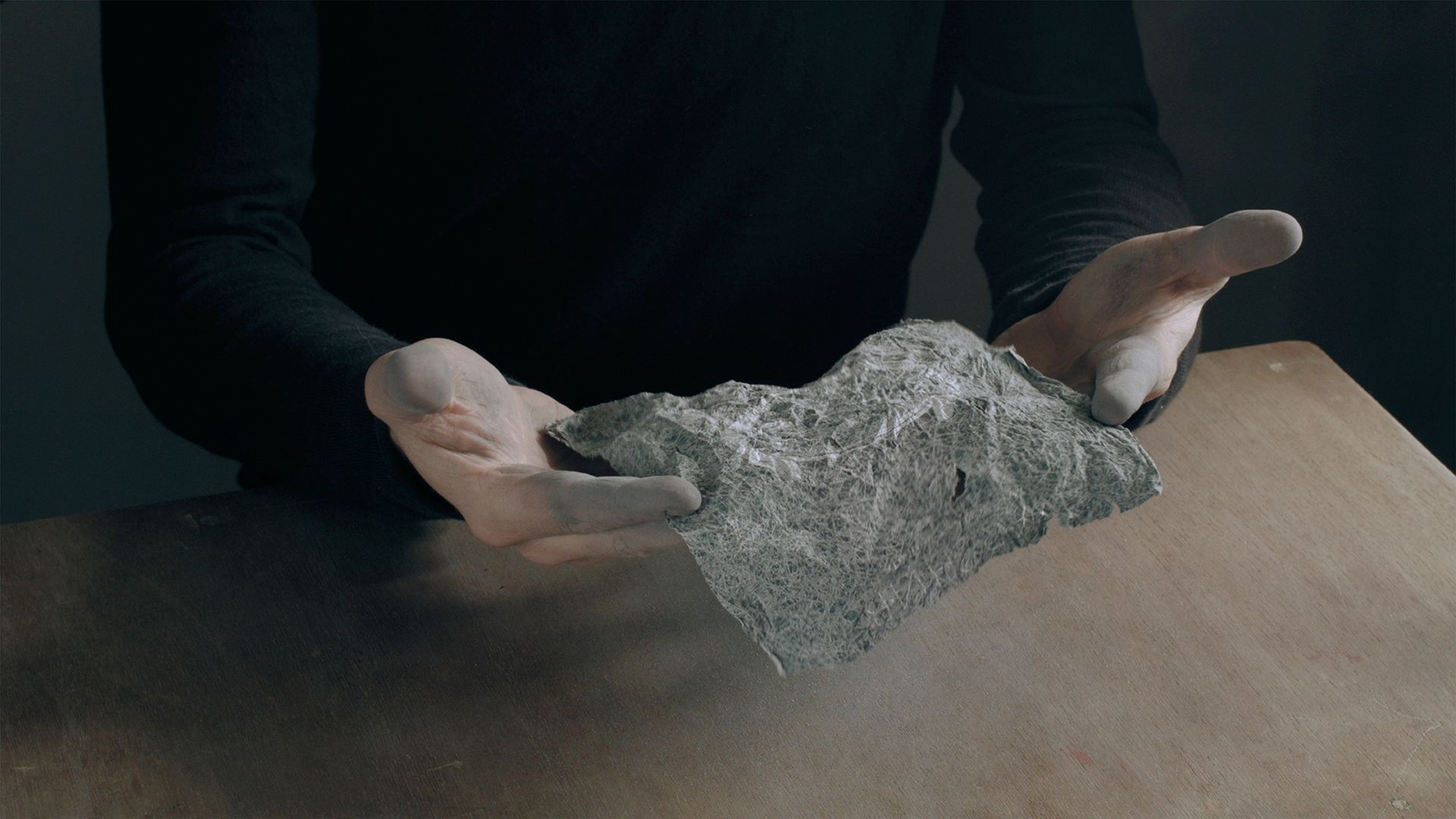
What Can a Dot Become?
Group show
Artists : Charbel-joseph H.Boutros, Ismaïl Bahri, Sirine Fattouh, Stéphanie Saadé, Lei Saito, Vincent Verhoef
Curator : Stéphanie Saadé
Akinci Gallery / Amsterdam
May 3 - July 13, 2019
Press release / pdf / English
Tour through the exhibition / English
Seven of Sirine Fattouh’s (Lebanon, 1980) Sleepers (2017-2019) are scattered in the gallery; Formless at first sight, the small pebble-like figurines are actually representations of sleepers, realized during insomnia nights. While the artist was unable to sleep, she shaped the sleeping figures, giving them the relaxed and peaceful features of the one who is hugged by Morpheus’ arms. Fitted to the palm of the hand, the pretty silver figures appear like magical talismans that one could carry to conjure the impossibility of sleeping. Cast in brass and coated in silver, they become mirrors in which the artist’s sleepless face first reflects, merging symbolically with that of the sleepers. The visitor is also allowed to manipulate them, finding her/his own face mirrored on the uneven shiny round surfaces; they offer another image of oneself, as can happen in dreams, in Morpheus’ mirror. In From Syria to Palestine: El Autostrad, realized in collaboration with Stéphanie Dadour (Beirut, 1980), the Lebanese territory is reduced to two dots: North and South. The highway draws a straight line between the dots, which the two women borrow as they drive and film, keeping aside from villages and their particularities.
Another work, this time by Charbel-joseph H.Boutros (Lebanon, 1980), evokes sleep and unconsciousness. The subject characterises largely the artist’s practice, and his work Night Cartography (2011-2019) is at the start of several other series all aiming at materializing sleep. Here, sleep takes the shape of a black hole – we can remember the first photo ever taken of a black hole, recently released in the press – laying a dark veil onto the paper. The circular stain sucks us into a moment of absence of the artist: the actual work is based on the utmost moment of inactivity, that of sleep and unconsciousness, the opposite of how the working process is usually imagined. The artist seems to apply the rational method of mapping to this irrational moment, in which rules can be changed, roles inversed and laws, such as the one of gravity, ignored. Essentially, the artist defines his artistic and political posture as that of a sleeper.
